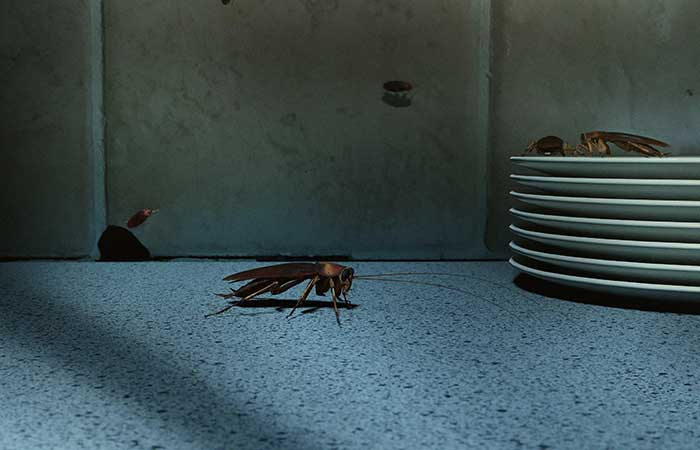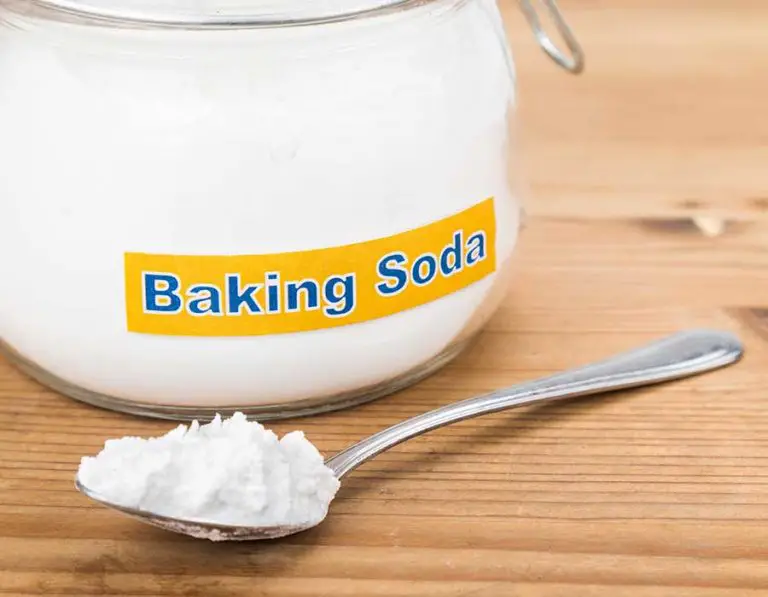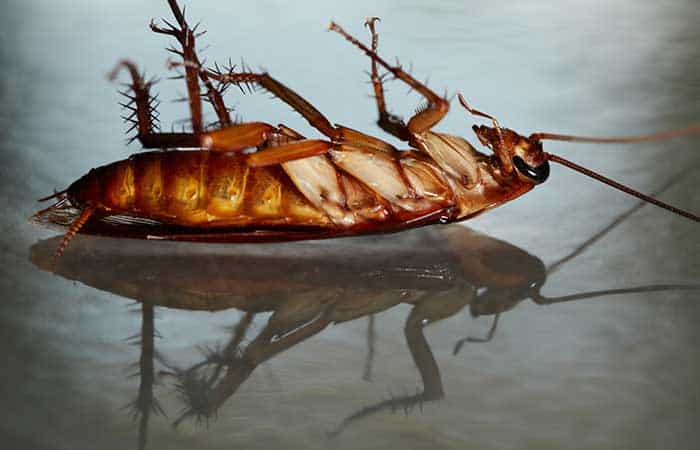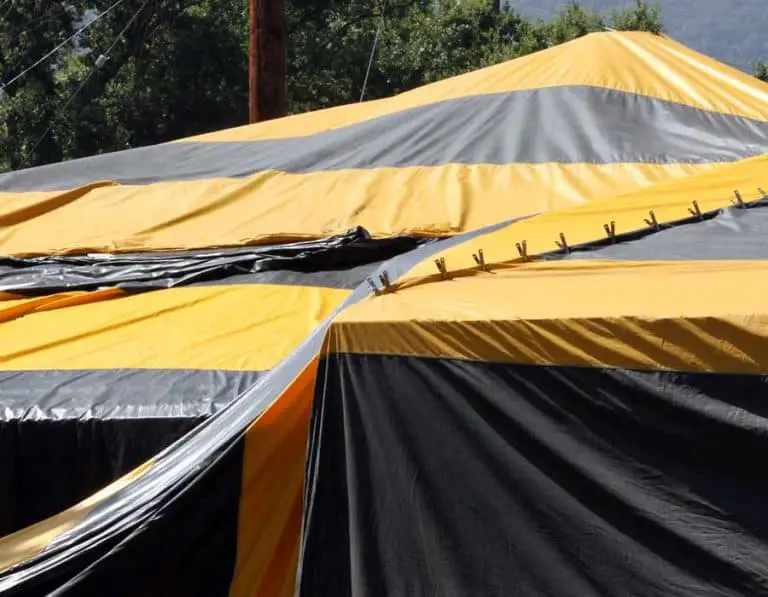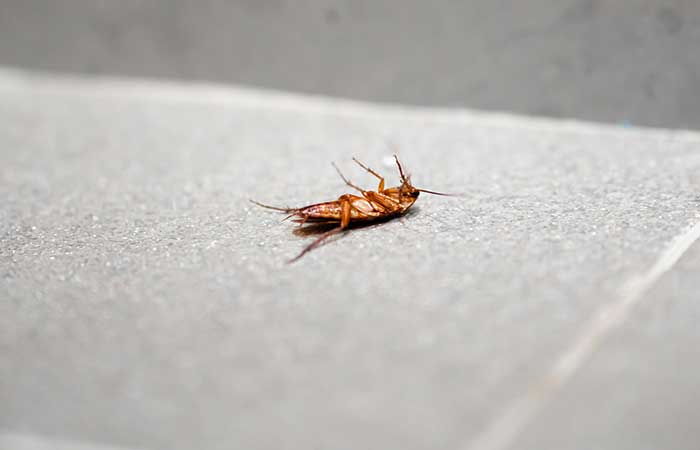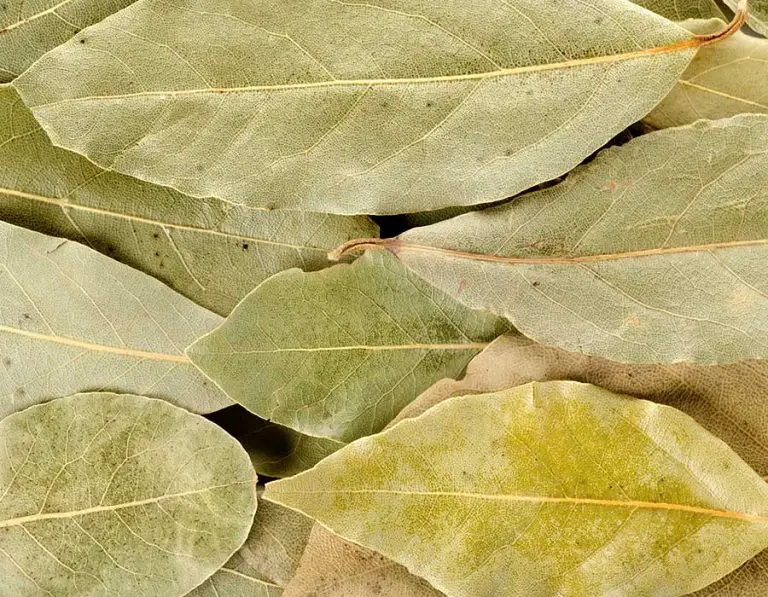How To Find a Cockroach Nest (and Get Rid of it)
If you see a single cockroach scurrying in your home, we’re sorry to break it to you but it is probably the sign of a bigger infestation which could mean there is a roach nest somewhere nearby.
Cockroaches like moist, dark places near food and water sources. They may live there unnoticed for weeks or months as they breed and grow. Nests can be found in some of the tiniest and most confined areas that you may not expect to find roaches, such as behind refrigerators, kitchen cabinets, bathroom drains, or even electrical appliances such as microwaves.
The best method of eliminating an infestation is to firstly find the nest by looking in common roach nesting places. Cockroaches live in tight-knit colonies, so eliminating the nest will eliminate a large number of these pests at once. Cleaning up the nest after exterminating roaches is extremely important, the scent of a nest and dead roaches will not only be unpleasant but also attracts other roaches in the area.
Cockroach nests might be quite distressing to discover in your house since no one wants to live with cockroaches. When you find a nest, you’re probably dealing with an active infestation but do not worry, there are simple steps you can take to seek out, destroy and then clean up a roach nest in your home.
Why Are Cockroaches A Problem?
Cockroaches in your home can be a real problem. Cockroaches are dirty and their usual food source is garbage, decaying food, and feces; this means they carry germs and bacteria on their legs and bodies which then deposit onto surfaces that people touch or eat from accidentally.
Roaches can be dangerous for those with allergies, as well. Cockroach allergens may induce or contribute to asthma attacks. Roach molted skin and feces cover everything in an infested home, making it difficult to breathe if you spend a lot of time there.
Aside from their health risks, these noxious pests can also cause a stench in your house. While they aren’t apparent at first, roaches produce an aggravating musty scent that grows with their numbers.
What Does a Cockroach Nest Look Like?
The term “nest” can be misleading since they might not always appear ‘nest-like’. Roaches do not build nests, so when the word nest is used, it refers to a large gathering of roaches living together usually in a secure location with ready access to food and water.
Cockroaches nest anywhere that provides a safe and warm place for their young to grow and mature – most commonly behind kitchen appliances, under sinks, inside walls, and between furniture. Most nests are hidden away in inaccessible spaces, so it is often hard to find them at first.
When you find a nest, there will be lots of roach droppings and smells, along with dead cockroaches.
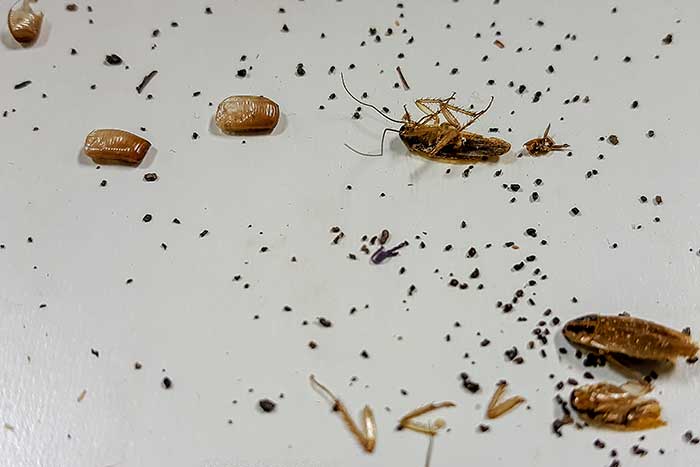
How To Know There’s A Cockroach Nest Inside Your Home?
The detection of one roach is a strong indication that roach nests exist in your property. Cockroaches are nocturnal and usually only come out at night, so this may be the reason you only spot the odd one.
However, there are a few sure-fire ways to know if you have an infestation. These include:
Baby cockroaches: The presence of these tiny, brown roaches indicates that roach eggs have hatched nearby. This is conclusive evidence that you have a colony of roaches nearby.
White cockroaches: Albino roaches aren’t a separate species of roach. It’s a growing cockroach that has shed its skin. The shedding process is a requirement in the life cycle of a cockroach in order to grow and young roaches shed their skins up to 10 times before they reach adulthood.
Molted or shed skin of roaches: If you find a white, dry, and brittle shell on your floor or any other surface, it may be the shed-off skin of a roach. This will almost always be left near the nest where the cockroach has been hiding for safety while it sheds.
Droppings: Roach droppings are small cylindrical pellets. These can be anywhere from 1mm-3mm long and have clear edges with dark centers. If you spot more than a couple of these in one area, there is a nest nearby.
If you have any of these somewhat unpleasant items in your home, you are looking at an infestation.
What Does a Cockroach Nest Smell Like?
Roach nests have a distinct smell that only those who have been infested can truly identify. This stench isn’t particularly appealing to humans and can be identified fairly quickly.
The common name for a roach nest is a cockroach nursery and this is an accurate description of the odors coming from these places. They tend to smell musty, mildewed, or dank. The scent is attributed to the roach droppings and secretions which contribute to the smell.
When cockroaches congregate, they release cuticular hydrocarbons when they defecate and urinate, resulting in a musty, pungent smell. The pheromones produced by these hydrocarbons attract more cockroaches to the colony. If a food source is found, cockroaches usually generate pheromones and this is how the colony will grow. The odor also grows stronger as the roach population increases.
Roaches also produce an unpleasant musk-like scent when they feel threatened or are injured. The presence of this musky odor is a sure sign of an infestation and should be dealt with immediately.
How to Find a Roach Nest
Finding roach nests can be a difficult task, especially in homes where there are many small hiding spaces for roaches. Roaches tend to establish their colonies in certain areas that are ideal for laying their eggs. Below, we’ll give you a guide that will direct you to these popular hiding spots for roaches.
If the thought of opening cupboard doors, or putting your hand underneath cabinets or behind appliances is scaring you, just remember that it is very rare for cockroaches to bite. The only real concern you should have is the germs that roaches can carry, so it is important to wear gloves or wash your hands thoroughly if you come in contact with any directly.
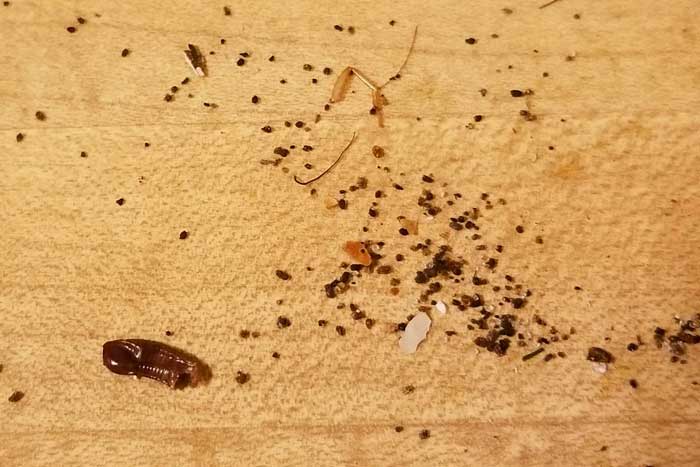
Where To Look For Roach Nests At Home?
Cockroaches like a dark, humid, and moist environment. Honeybees also seek out locations that are protected but have easy access to food and water. As a result, the kitchen or the bathroom is frequently where you will discover a nest so it is always good to start your search there, but here are some specific obvious and not-so-obvious places you should check:
Behind the fridge: Roaches love dark, tight places; they also tend to hide near any sort of water source. The backside of the fridge is one of their favorite spots because it provides easy access to food and water (the moisture inside).
If you have a fridge that has a freezer compartment on top of it, check there as well because roaches often hide in the condenser coils.
The inside of kitchen cabinets: When it comes to finding cockroaches, you should always take a look inside the cupboards. Most people are aware that roaches often hide behind or under appliances but they are also shy about being spotted. They will try to find ways into your kitchen that allow them to remain hidden.
Behind the stove: This appliance provides natural darkness because the oven is usually under a counter. Roaches are also known to hide near hot water tanks and dishwashers, so having your stove moved may help you find their nests.
Underneath the sink: Cabinets also provide dark, moist shelter for cockroaches. The space under your sink may be another ideal location for roaches as it allows them to stay out of sight. The plumbing underneath the sink may also provide a source of water, allowing them to survive longer.
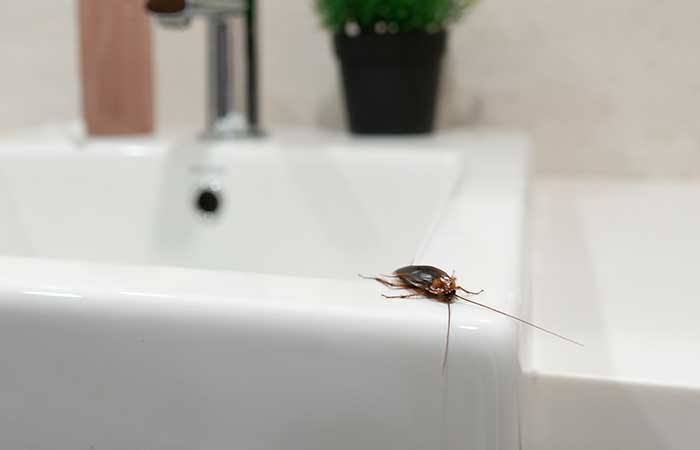
Behind radiators: Another fantastic location for a cockroach nest is in the dark and warmth provided by a radiator.
Behind sinks and toilets: Check behind your sinks and toilets as this space provides a perfect dark and small protected space that roaches may be attracted to.
Inside of shoes: Shoes can provide shelter for roaches because they’re dark, warm, and humid; the perfect place for roaches to hide. Always check your shoes if you are suspecting an infestation.
Inside of appliances/electronics: Roaches are known for nesting in anything that is made of plastic or has any sort of wiring inside. Appliances usually have dark spaces within them so they are great places for roaches to inhabit.
Furniture: A lot of times cockroaches will try to establish a nest behind or underneath the furniture in your home. Therefore, look under cushions and around your couch and chairs before you bring them into your living area.
Garbage containers: When it comes to food sources, garbage is one of the biggest attractions for cockroaches. They are always looking for their next meal and a trash can could provide the perfect space to next and be close to food.
Cracks and crevices in walls: Cockroaches are known for squeezing into the smallest spaces. They also love dark, moist places so any crack or crevice in your home could be ideal for them to relocate.
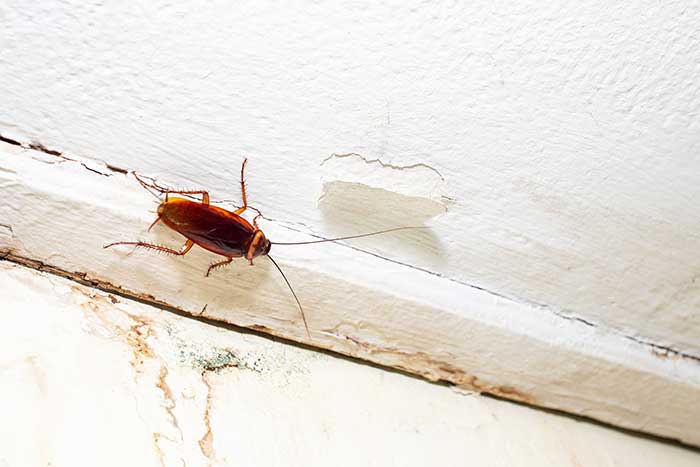
Behind pictures and wall decorations: Often times people will hang pictures on the walls of their homes without checking what’s behind them first. These spaces can provide great shelter for roaches and they tend to stay out of sight in these locations.
Basements or attic spaces: Since roaches love it dark and moist, these are ideal spaces for them to nest. Be sure to check all areas of your basements and attics, including behind storage boxes, in vents, and underneath roof beams.
Where To Look For Roach Nests In The Garden?
Some cockroach species prefer to dwell outside, such as the Oriental cockroach and wood roaches. They seldom enter a residence unless they’ve exhausted their food or water supplies. In some instances, in extremely cold weather, roaches may seek warmth and venture inside your home if their outdoor next has become inhabitable.
An infestation tends to get worse during the spring and summer months due to the warm weather; this is because roaches reproduce faster during warmer climates.
If you are looking for a nest in your yard haunts, try looking in mulch piles, underneath dumpsters, woodpiles, and inside drains.
Different Types of Roaches and Their Nests
There are over thirty species of cockroaches in the United States, but here’s a list of some common cockroach nests and where they tend to hide:
American Cockroaches
American cockroaches tend to build their nests in hidden, dark areas. They are likely to nest under flower pots, household garbage containers, cement slabs or other ‘waste’ spaces. The American cockroach is the largest species of cockroach found in homes and one of the slowest at reproducing.
German Cockroaches
The German cockroach typically nests indoors in smaller spaces such as cabinets, drawers, refrigerators, and pantries. They prefer to live in warm, moist places that are close to food sources. Generally, they will nest near carpeting or ventilation systems. It is not common for them to travel over long distances, so it’s rare for them to be found outside of the home.
Brown-Banded Cockroaches
The Brown-banded cockroach is not as common, but the same principles of finding a nest apply to this roach as well. They tend to live indoors and live in warm areas such as ceiling tiles, insulation, and wall voids. Generally, they will reside behind stationary objects such as pictures on a wall or in the upper corners of a room.
Wood Roaches
The wood roach is the most common type of cockroach found in trees. They tend to build their nests high in trees which makes them difficult to reach with pest control methods. They also lay their eggs in leaves or under loose bark. These areas are hard to access for extermination purposes.
Oriental Cockroaches
Oriental cockroaches are the most common type of cockroach in the United States. They live outside and build their nests primarily under large rocks, mulch piles, woodpiles, flower beds, hollow trees, leaf litter, and even garden hoses.
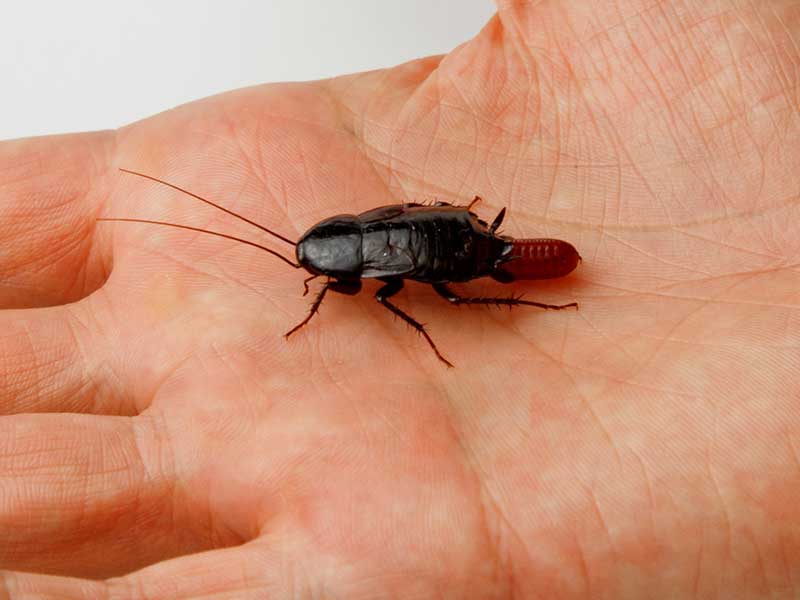
How Many Roaches Count As An Infestation?
Once you have found the nest, the scale of the problem may be determined and you can decide whether this is something you can handle on your own or if you require the assistance of a professional.
Finding a few cockroaches around the house isn’t cause for concern – you should be able to handle these with some homemade cockroach remedies. This is very rare though, and it may be that you just need to look hard to find the nest. In most cases, there will be a colony somewhere in or near your home.
However, even if you do find the nest, professional help isn’t always necessary. You should be able to eliminate the pests before things get out of hand as long as you act promptly.
There is no certain number of cockroaches that indicates whether or not you have an infestation. If you think you have found a small nest of roaches, you should try the methods outlined below to try and eliminate them.
On the other hand, let’s say you have evidence there are hundreds of cockroaches, this is a completely different matter. An actively breeding roach population can become out of hand very quickly. If you have discovered several large nests, we would recommend the help of a professional who will have the knowledge and equipment to handle this scale of infestation.
What To Do When You Find Cockroach Nest?
Once you have found the nest, you need to consider what course of action to take. If there are a few roaches hanging around your home, then this is nothing to worry about. It may be that the nest is close by and just requires regular pest control treatments in order to keep it at bay. In fact, there is no reason why you can’t deal with the problem yourself using home remedies.
For a larger nest, you may want to try following some of these steps:
Spray Insecticides
You need to kill as many of the roaches in the nest whilst you have the chance, so applying some sprays will help.
If the nest is in some inaccessible area, you can spray insecticide directly into the nest entrance to kill some of them that are heading back home. However, if the insects are not entering or leaving the nest then it may be impossible to treat them in this manner.
If you have an opportunity to spray directly on the roach nest then this would be the most efficient way to exterminate most of the colony.
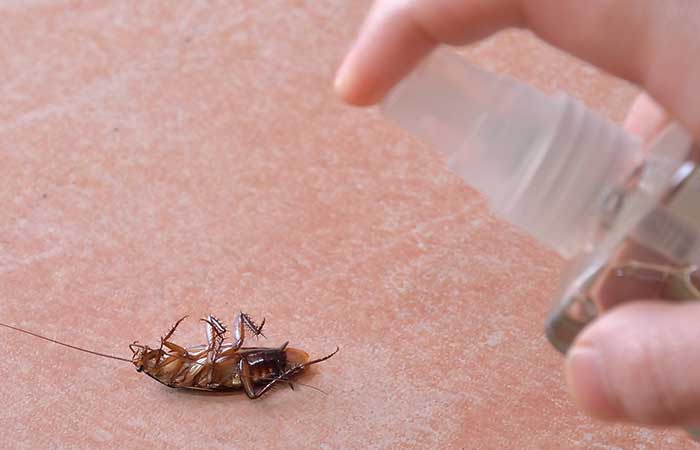
Set Up Sticky Traps And Gel Bait Stations
If you disturb the nest, you will have roaches scurrying away and looking for a new place to live. Use baits and traps around your house to clean up the few that may make it away from their old nest.
The most common cockroach traps are sticky traps and gel bait stations like the Advion Roach Bait Station. These types of traps are non-toxic so they can be used around children or pets without any concerns.
Apply Diatomaceous Earth
Diatomaceous earth is a natural and non-toxic powder derived from the fossilized remains of diatoms. When roaches come into contact with it, the powder will stick to their legs and cut into them when they clean themselves or groom their antennae.
The insects dehydrate and die in 24 hours. This works very well against roaches and other crawling insects such as ants. You can apply it around the perimeter of the nest as an extra layer of attack.
Clean Up
Once you are satisfied the roaches are dead, you need to clean up and remove any evidence of them. If there are dead roaches or parts of them around the nest, other roaches may come back to eat them as they would provide a nice source of food. You may find cockroaches on their backs after using pesticides, this is an indication the poison has worked effectively.
You should sweep out the nest and try and collect as many bodies as possible. The best way to dispose of the dead roaches is to put them in a plastic bag, seal it and place it in an outside rubbish bin. You can also use a vacuum cleaner to get rid of the smaller ones but make sure you take the vacuum bag to the trash straight after doing this.
Clean up any roach poop thoroughly as this will contain the germs that cause diseases like E. coli that could get into your food or water sources. Clean any mold from the area as this is a sign of a place cockroaches will often frequent.
Use a detergent and water solution to wipe out the rest of the nest. Be sure to get into all of the cracks and holes where they may have been hiding.
Block The Sources
Once you have dealt with the existing nest, you need to try and locate where they were coming from originally. Examine the frame of your doors and windows, as well as any spaces between them and the ceiling. Use caulk to seal up any cracks or holes to prevent them from coming in through these gaps again. Cutting off access points will help to decrease reinfestation possibilities.
How Do I Get Rid of Cockroach Nest Smells?
Cockroach nests may smell bad due to the decaying bodies of these insects. If you’ve killed some with sprays then it is possible that they will begin to rot and give off a very pungent odor. This not only smells bad but also attracts other roaches.
There’s also the cockroach feces that contains pheromones that attract other cockroaches.
Once you have searched every possible space for these items and cleaned them away, the smell will eventually go away, but you may need to do several deep cleans using a fragranced detergent or surface cleaning solution. The smell will stay on the surfaces for some time unless cleaned.
If the area is damp, dry it out using paper towels and a dehumidifier if one is available. It’s best to dry it as completely as possible as humid conditions are perfect for the roaches to breed and thrive.
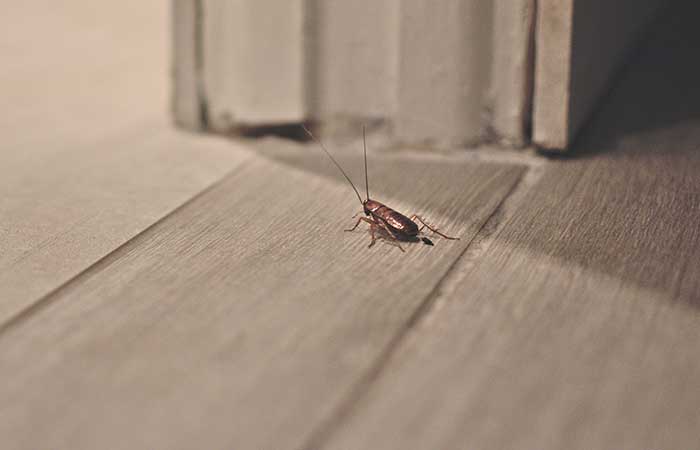
How To Prevent Cockroach Nests
Most nests have a few main entry points allowing them in. Be sure to block these off to prevent any more roaches from coming in. Check underneath your sinks, dishwasher, and washing machine for any leaks that could cause water damage in the future.
Some other things you can do are:
- Seal food inside airtight containers before placing them in bins or recycling bags.
- Don’t leave any dirty dishes overnight as cockroaches are attracted to these areas. Instead, clean up after every meal and place all used utensils in the dishwasher.
- Don’t leave food in packets or bags laying around, use air tight food storage containers.
- Clean up after pets as they may spill food that attracts roaches.
- Improve your garbage disposal by ensuring bags are sealed, food isn’t exposed and bags are not left exposed for long periods of time, cockroaches can enter plastic bags with ease.
- Get rid of clutter in places such as your basement – old cardboard boxes laying around is perfect for a roach nest.
- Cover floor drains or any exposed water pipes to stop any cockroaches from coming in through them.
Conclusion
The best way to get rid of a cockroach nest is to locate it and destroy it completely. Clean up after yourself very well, clean the area with a disinfectant, and remember not to leave any food source around or you will have other problems in the future.
It’s very important to know where the nests are so that you can stop them from coming back into your home. Block off every possible entry point that the cockroaches could come into your home through, then clean up thoroughly after yourself and you should be good to go!

